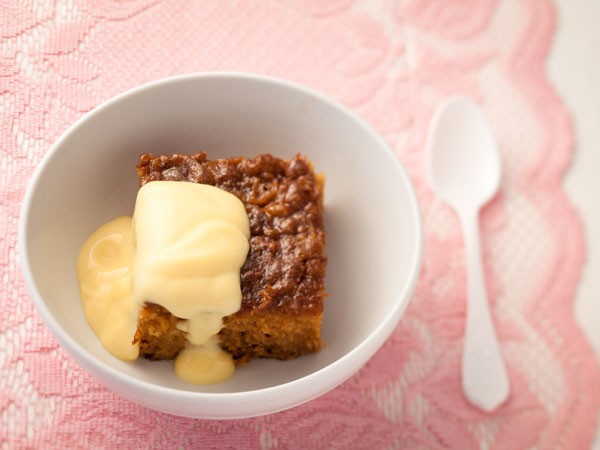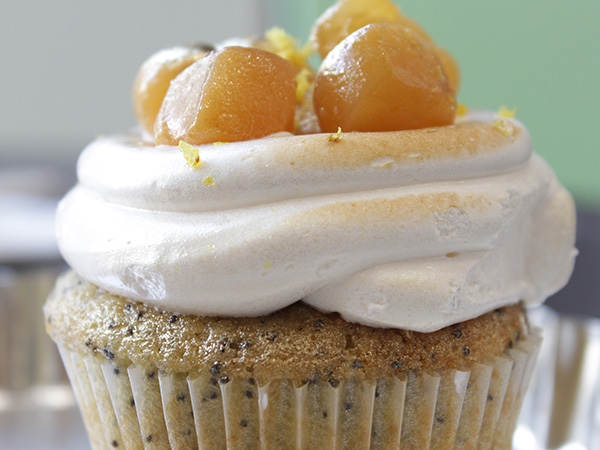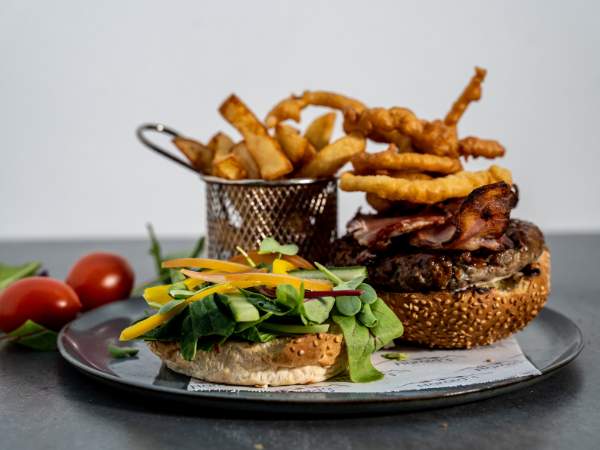News
18 iconic South African desserts
Tuesday, December 25th, 2018South Africans love sweet things – we sweeten veggie dishes, we love barbecue sauce on meat, and at least one of our puddings has its own day. And while we’re completely okay with celebrating milk tart on 27 February each year, we couldn’t help feeling that our multicultural country might be hiding more dessert gems.
“[When it comes to dessert] every African cuisine is under-represented. As black South Africans, we have no specific cultural dessert – most of our sweet treats we’ve adopted from Afrikaans and English culture,” says Hope Malau, Author of Johanne 14, in which he documents some of South Africa’s traditional home cooking recipes. Instead, says Hope, many amazing dishes have come about by people creatively adapting them to make them economical. Food anthropologist Anna Trapido concurs. “There aren’t a lot of desserts in indigenous South African food genres – mostly in township cuisine what you find is lovely retro Eurocentric things like Queen cakes, rice puddings and trifle.”
Our desserts take on many forms, names and versions, and come from multi-faceted origin stories. While not exhaustive, here is a list of some of South Africa’s most iconic desserts.
Amagwinya/vetkoek
It’s no secret that South Africans love fried dough. Amagwinya (or vetkoek) could be seen as SA’s twist on a doughnut. Yeast-risen bread is fried and served with either sweet toppings or savoury. We reckon it qualifies as a pudding when slathered with butter and jam, though it’s possibly more common as a savoury snack, filled with polony, savoury mince or cheese.
Asynpoeding
This traditional Afrikaans dessert is similar in texture to malva pudding. However, where malva is famous for its almost unbearably sweet (read: fantastic) syrup, asynpoeding has vinegar incorporated into its sauce. If this sounds like a bad idea, we can assure you it’s not – the vinegar only adds a refreshing acidity to counteract the pudding’s sweetness. You can make your own version by following the classic recipe documented in Kook en Geniet, the Afrikaans cooking bible first published in 1951. (Or try this recipe by blogger Cooksister.)
Boeber
One of the most recognisable Cape Malay desserts, boeber is a comforting mix of vermicelli, milk, rose water, cinnamon and cardamom. It can also contain sago, which delightfully thickens the mixture. Try it at Biesmillah Restaurant or at Gold Restaurant in Cape Town, or try your hand at this recipe.
Bombay crush
Food anthropologist Anna Trapido reckons that this inspired milkshake-slash-dessert is a Durban creation. Traditionally enjoyed in the Indian community, it’s made by mixing soaked basil seeds (subja) with cooked vermicelli noodles, rosewater and a little milk. This mix is known as falooda and can be enjoyed as a drink as is, which is a common drink in mainland India. However, to make a Bombay Crush, you pour falooda into a glass and top it with vanilla ice cream. It’s believed that Mullah’s Cafe in Durban was one of the first places to serve this yummy treat and you can try it out at Indian Summer in Durban.
Don Pedro
Is it a dessert? Is it a milkshake? Whatever your feelings on the nostalgic Don Pedro, there’s no denying that ice cream topped with booze (originally whiskey, but now Kahlua or Amarula seem to be the tipple of choice) is inherently South African. You can find quite the curated Don Pedro offering at Thunder Gun Steakhouse in Joburg.
Hertzoggies
A cross between a little tart and a biscuit, the simple Hertzoggie has an interesting backstory. According to Cape Malay food expert Cass Abrahams, who was quoted in Gabeba Baderoon’s book Regarding Muslims: From Slavery to Post-Apartheid, Hertzoggies were invented when JBM Hertzog (South Africa’s prime minister from 1924 to 1939) was running for prime minister. He reportedly made two promises: that he would give the women the vote and that he would give the Cape Malay people the same rights as white people. It’s believed that the Malay community was excited about this good news and so they created a little treat from that started with a pastry base and was topped with apricot jam and coconut. They then called it a Hertzoggie in honour of General Hertzog. The story takes a turn, however – when he came into power, Hertzog only fulfilled one promise. He allowed women to vote, but he didn’t deliver on his promise to ensure equality between the Cape Malay people and whites. Naturally, the Malay community was upset so they took that very same Hertzoggie, covered it with two-tone icing and called it a twee-gevreetjie (little hypocrite). Try Justin Bonello’s recipe.
isiJingi/Setjetsa
isiJingi (as it’s called by Sotho speakers) or setjetsa (in Zulu) is a comforting dish made of cooked maize and pumpkin. It’s traditionally served as a savoury main, but more recently has been converted into a dessert by Nompumelelo Mqwebu. She dreamt up this glorious creamy version in her latest book, Through the eyes of an African chef.
Jalebi
This melt-in-the-mouth magnificently sweet treat is centuries old. According to the Times of India, it probably originated in West Asia, sometime in the 13th century. In South Africa, it’s popular in the Hindu community and you can find it for sale in some small corner shops and some Indian restaurants. To make it, batter is fried in its iconic coil-like shape and plunged into syrup. The syrups can be flavoured with saffron, cardamom or rose water. Want to try your hand at it? Here‘s a recipe.
Koeksisters
Koeksisters are made by frying plaited dough then dunking it into ice-cold syrup. The result is a soft interior, a crisp exterior and sticky fingers for days. The exact origins of koeksisters are sketchy, but the earliest version of the recipe is believed to have come from the Dutch colonists, and that the koeksisters we know today stem from an old Dutch doughnut recipe. We all know that the best koeksister comes from a padstal, though, found off the beaten track on a road trip. Want to try your hand at plaiting your own? Try this recipe.
Koesisters
Not to be confused with the koeksister, the koesister is a genius Cape Malay invention made with an incredibly light and fluffy yeasted dough. It’s delicately spiced with notes of cardamom, cinnamon and dried ginger. Like its almost-namesake, it’s dunked in syrup but then comes its integral component – a dusting of desiccated coconut. All in all, it makes for the most deliciously fragrant bite. Find freshly fried koesisters at one of the many stalls on Rose Street or Wale Street in the Bo-Kaap. South Coast Cafe on Loop Street in Cape Town and Biesmiellah in the Bo-Kaap also serve them.

The glorious koesisters at South Coast Cafe on Loop Street. Photo by Nikita Buxton.
Mageu
Mageu is a traditional non-alcoholic maize-based drink. Says Hope Malau: “Sotho women are innovative in the kitchen. I believe the greatest thing I grew up with was Mageu, the sweet-and-sour fermented porridge. We can start a meal or finish a meal with it.” Make Hope’s version using the recipe he shared with us.
Malva pudding
Easily one of the most identifiable desserts, malva pudding often serves as a bowlful of nostalgia. The origins of the malva are a little sketchy, but we might have Michael Olivier – 2013 winner of the Eat Out Lannice Snyman Lifetime Achievement Award – to thank for the humble pudding’s continued success. While working for Boschendal in the 70s, he asked his friend Maggie Pepler to help in the kitchen while their chef was on holiday. She put malva pudding on the menu and the rest is, as they say, history. (If you’re hit with a desperate craving, whip up a quick batch. You won’t regret it.) Word on the street in Cape Town is that Jonkershuis makes a mean malva, too.

Humble malva pudding. Photo by Jan Ras.
Melkkos
Melkkos is another frugal dessert made from common pantry items that can be whipped up in minutes. It’s essentially milk cooked with flour until thickened and flavoured with cinnamon, and is often finished with butter and a little naartjie or orange zest. Melkkos is believed to have originated during the time of the Great Trek, when travellers needed to make comforting food out of what they had with them.
Milk tart
This is easily one of the country’s most iconic desserts. The milk-based custard is flavoured with cinnamon and orange peel, and set in a shortcrust tart. As mentioned above, it boasts its own day (27 February) and has sparked a very lively online debate about whether the custard should be baked or simply set in the fridge. We don’t have the definitive answer, but we do have six innovative ways to enjoy milk tart that you can re-create at home. If you’d rather leave the tarts to the experts, the one served at The Blue Crane in Pretoria is apparently worth writing home about.
Pumpkin fritters/pampoenkoekies
Yes, pampoenkoekies are usually served as a side for meat, but they’re so sweet that surely they qualify as a pudding? Pureed pumpkin is mixed into a spiced batter and fried before being rolled in cinnamon sugar. What you top it with from here is essentially what determines your estimation of this delicious treat. Caramel sauce? Whipped cream? A meat of some sort? Yes please to all. Here’s our recipe.
Pannekoek
The humble pancake (rolled – not stacked like Americans and their flapjacks) was certainly not invented in South Africa, but it’s definitely a dessert close to the hearts of many. The batter (slightly thicker than one used for crêpes) is quickly pan-fried before it’s covered in cinnamon sugar and lemon juice and rolled up. The best place to get them is probably at one of SA’s great food markets.
Peppermint Crisp tart
Of all our gifts to the world, Peppermint Crisp chocolate bars might be one of South Africa’s best, and this dessert takes full advantage of it. Layered tennis biscuits are topped with a caramel whipped cream with crumbled Peppermint Crisp bars folded through it. Sickeningly sweet? You betcha. Will you have seconds anyway? You betcha. (You can try gussied-up versions at Spek en Bone and The Wild Fig.)
Potato pudding/aartappel poeding (or artepil porring)
We have Facebook user Shamielah Toefy to thank for reminding us of this local dessert. A popular traditional dish in the Cape Malay community, this inspired dessert is made of a smooth sweetened potato mix. This might seem to imply it being something of a baked custard or flan, but the texture can actually be quite chunky – and delectably so. It’s usually dusted with ground cinnamon, cut into squares and accompanied by stewed fruit. (You can have it served just like that at the famous Bo-Kaap Kombuis.)
Queen cakes
A cross between a cupcake and a scone, a Queen cake can either be served dusted with icing sugar, or topped with a basic icing. Our Cape Town restaurant editor Zola Nene says that Queen cakes were a staple in her house when growing up, often made by her mom.
Rusks or beskuit
While the concept of twice-baked cookies aren’t inherently South African (the term ‘biscuit’ loosely translates to twice-cooked in French), rusks certainly are. Rusks appear to have made their way into the hearts of South Africans by way of the voortrekkers, the term that refers to the group of people who migrated from the Cape to the east of South Africa during the 1800s. As they were nomads, they needed non-perishable food items, and the dried rusk provided sustenance on long journeys. In the 1930s, the rusk was made famous by none other than Ouma Greyvensteyn, and her Ouma rusks are probably still the most-loved version. Are they technically a dessert? Maybe not. But the best ones are usually pretty sweet and you most certainly have to have them with tea. The true test of a South African is the ability to perfectly time the dunking of a rusk: too short and you end up crunching your way through it, too long and you risk losing half of your rusk in your coffee (only to fish it out unceremoniously with your fingers).

Mosbolletjie bread about to become yummy rusks. From The Classic South African Cookbook, by Melinda Roodt. Photo by Christin Boggs-Peyper.
Sago pudding
Sago pudding is simple yet decadent. While uncooked sago might look like styrofoam balls, it becomes wonderfully light and translucent when slowly cooked in milk (which is normally flavoured with a bit of cinnamon and vanilla). Similar to rice pudding, sago pudding is a hug in bowl form. Michelin-starred South African chef Jan Hendrik van der Westhuizen makes this impossibly pretty sago-inspired pudding at his restaurant in Nice, France. Closer to home, Biesmillah makes a smashing sago pudding.
Trifle
When we spoke to South Africans of various backgrounds and cultures, this sponge, jelly and custard dessert seemed to be the one thing nearly all had in common. Mpho Tshukudu, author of Eat Ting, said that though trifle might not seem traditional in South Africa, it’s very popular. Trifle might have arrived with the British, but South Africans have certainly made it our own. Try Yvonne Chaka Chaka’s inspired version with canned pineapple and Tennis Biscuits, or this summer berry trifle.
Help us in our important mission to build a directory of South African desserts. Tell us about your favourite plus where you get your fix in the comments section below.
Looking for a place serving South African fare? Download our new app and find one near you in seconds. (Plus you could win R5000 cash just for downloading and registering in June 2018!)

















